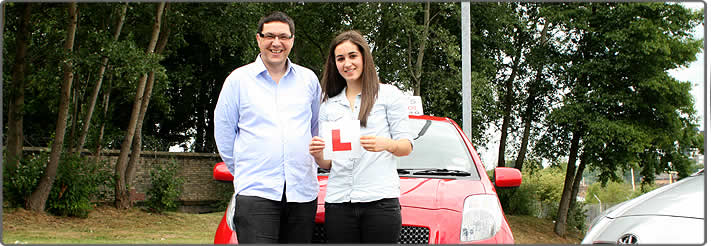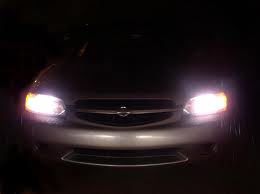With a huge amount of speed ramps on our roads in Glasgow, driving lessons can sometimes seem more like an obstacle course! Look out for the white painted solid triangles on the road which mark the ramped area. There may also be warning posts with reflectors on top. Slow down in good time on approach to the ramps. Usually you will need to be at least less than 10m.p.h. to negotiate them safely.
Driving Tips
Time for a Spare Wheel Comeback
Motoring organisations say that punctures and other tyre problems are only next to battery issues in the top breakdown causes. Car makers usually only supply temporary puncture repair cans, or “space saver” wheels. Some manufactures will sell “proper” spare wheels as add-ons. Personally, I think the old spare wheel saves on all the stress of trying to find a tyre fitter – when the temporary repair is useless – on a sunday evening during a driving lesson through Glasgow Westend, who just happens to have your size of tyre and wont cost you a truck of money to come out and solve the problem.
Avoid Driving While Invisible. Light up,and be seen!
RGDS Glasgow – Driving Tyre Safety to Schools of People Across Glasgow
With winter approaching, its a good time to check your tyres are in good conditiion. Look for visible tread across at least the central three quarters width of the tyre and around its whole circumference.
The recommended minimum depth of tread is 3mm. The legal minimum is 1.6mm.
At RGDS we believe that all drivers should be responsible for their vehicles, and know the law.
How To Pass Your Driving Test First Time

How To Pass Your Driving Test First Time
Want to know how to pass your driving test first time? There are many reasons to want to pass a practical driving test on the first attempt. In addition to the prestige and satisfaction of gaining a “first time pass,” there are other considerations such as the financial implications involved. With the current costs of practical driving tests – and other incurred costs such as possible loss of earnings to actually take time off work to sit the test – taking numerous retests is inevitably going to become both demoralising, and a drain on finances. The following advice sets out the most important factors towards achieving test success.
Are You Ready?
The number one reason candidates fail? They are just not ready.
There is no substitute to regular training and experience. The more training learners take, the more they improve, the more consistently well they perform. If a learner is unable to produce a consistently satisfactory and safe level of driving leading up to a test, then it is highly unlikely they will pass.
Qualified and experienced DVLA Approved Driving Instructors are best placed to assess a learner drivers’ performance, ability, and “test readiness.” They are professionals, with a responsibility only to present candidates for test who are at the standard required. It would be highly advised to follow their advice in this matter.
Are You Consistent?
In an effective training “partnership” between pupil and instructor driving progress should be discussed, agreed and recorded. If the learner driver is producing a consistently safe level of driving and is able to complete manoeuvres on their first attempt with consistency, then they are showing some of the aspects of test readiness – but there is more to being prepared for test day.
Mock Test
Most driving instructors are experienced in conducting “mock” driving tests on their pupils. This is a hugely beneficial exercise in preparing for a test, and also a good guideline to assessing test readiness.
In a mock test scenario, learners get the opportunity to drive completely unaided – often over a test route- and sample the experience of a test. The instructor will direct the pupil just as an examiner would, and at the end of the “mock” test explain any faults committed and the seriousness of their nature. This psychological preparation is invaluable as the real “big day” will feel more familiar, with no unforeseen shocks and surprises. The other benefit is that any faults or weaknesses identified can be worked on and remedied before a real test.
2nd Mock Test
A second mock test- after working to improve any weaknesses found on the first one – will both further accustom the learner to the test scenario, and help confirm necessary improvements have been made. All being well, the learner now has “successful” test experience and will normally feel more confident in their ability to perform on test day. Confidence is a major key to passing.
If however, the mock tests don’t go well for the learner, it is a clear sign that further development is required. It may be that the instructor will advise deferring the test to a later date in this case. Learners should try not be disheartened, but concentrate their efforts in making these improvements. As previously mentioned driving tests are expensive – around the same cost as three hours of tuition – and just a few hours more tuition could make the vital difference. It can prove a lot more cost effective – and far less disappointing – to be advised by the driving instructor that more training is needed, than hear the same evaluation from an examiner. Guided by an expert instructor, the day of passing the test will soon come – and the chances of passing 1st. time are greatly increased!
